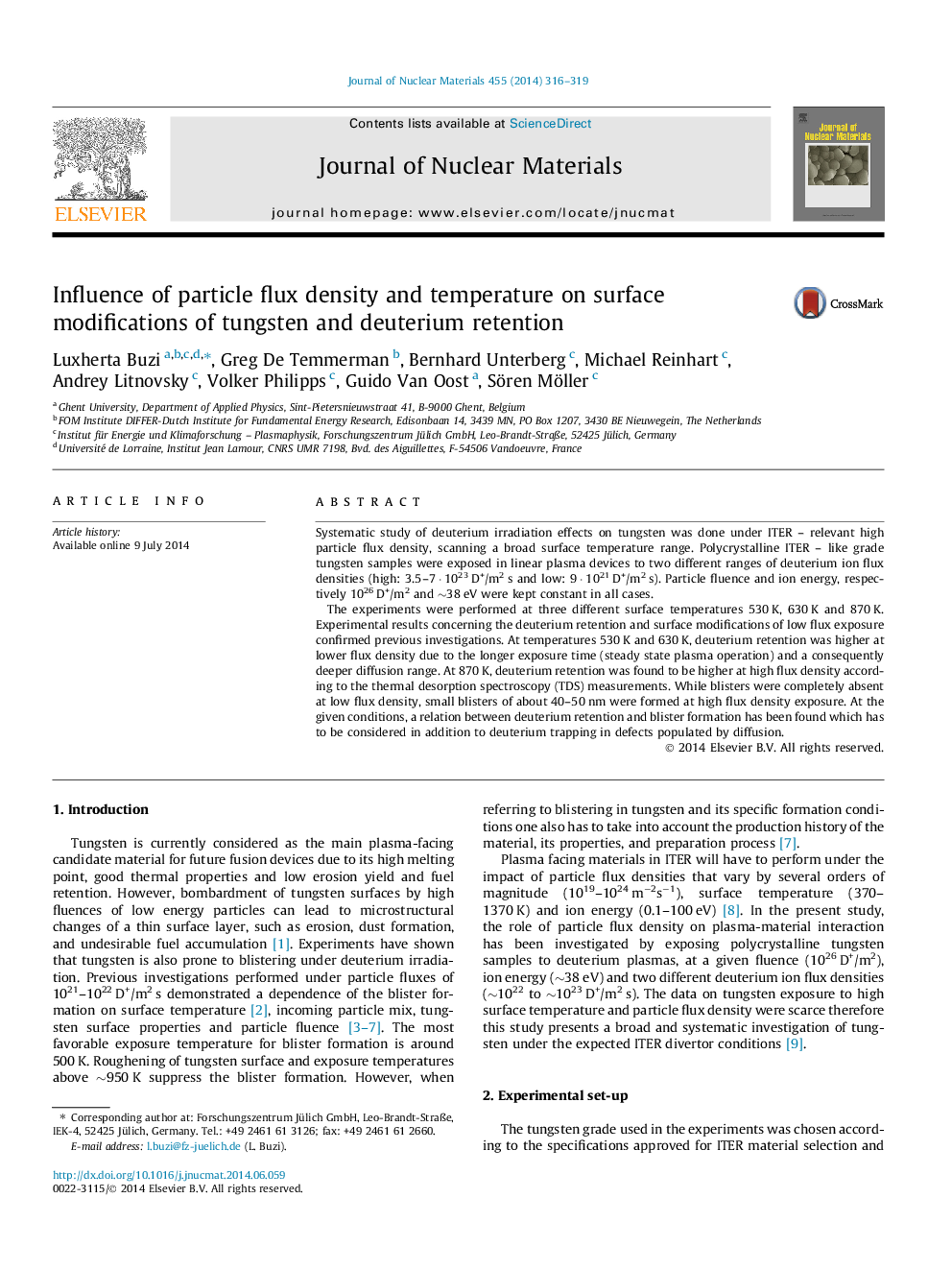| Article ID | Journal | Published Year | Pages | File Type |
|---|---|---|---|---|
| 1564981 | Journal of Nuclear Materials | 2014 | 4 Pages |
Abstract
The experiments were performed at three different surface temperatures 530Â K, 630Â K and 870Â K. Experimental results concerning the deuterium retention and surface modifications of low flux exposure confirmed previous investigations. At temperatures 530Â K and 630Â K, deuterium retention was higher at lower flux density due to the longer exposure time (steady state plasma operation) and a consequently deeper diffusion range. At 870Â K, deuterium retention was found to be higher at high flux density according to the thermal desorption spectroscopy (TDS) measurements. While blisters were completely absent at low flux density, small blisters of about 40-50Â nm were formed at high flux density exposure. At the given conditions, a relation between deuterium retention and blister formation has been found which has to be considered in addition to deuterium trapping in defects populated by diffusion.
Related Topics
Physical Sciences and Engineering
Energy
Nuclear Energy and Engineering
Authors
Luxherta Buzi, Greg De Temmerman, Bernhard Unterberg, Michael Reinhart, Andrey Litnovsky, Volker Philipps, Guido Van Oost, Sören Möller,
